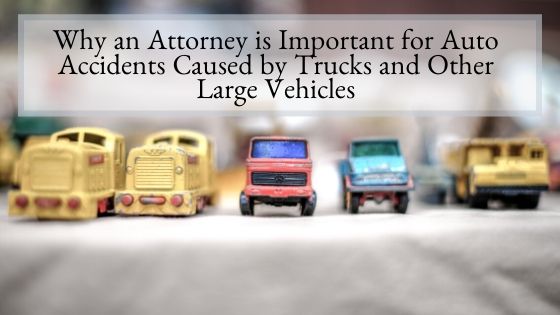Vehicle accidents can be a scary experience for many drivers and their families. Each year, around 40,000 people in the United States are killed in traffic accidents, according to the National Transportation Safety Board. While many people believe larger vehicles can be safer than smaller ones, they can actually increase the risk of severe injuries, both for the large vehicle occupants and the occupants of another vehicle. The following guide explores how large vehicles can cause more severe injuries in an automobile accident.
Bigger isn’t Always Better
While large vehicles have more inertia than smaller ones, it’s important to remember that crash survivability isn’t just based on the size of a car. For example, cars from the 1950s often weighed at least 1.3 tons more than a modern sedan, according to the National Institute for Highway Safety. Despite being heavier, these vehicles were notoriously unsafe for drivers.
Small vehicles have cabins that are designed to resist crushing and shearing forces. However, the engine block of smaller vehicles is designed to compress in the event of a front-end collision. When a small vehicle collides with a fixed object or another car, the engine block of the vehicle serves as a cushion to slow down the speed of the car over more time than a vehicle with a rigid design.
As a rule of thumb, the passenger compartments on smaller vehicles are less subject to deformation in the event of an accident. While larger vehicle frames may be designed to withstand large forces, simple physics prevents them from being as rigid as the compartments of a smaller vehicle.
Only Wheels Should do the Rolling
Larger vehicles are also more prone to roll in the event of an accident. While small sedans and midsize cars are often very stable and resist rolling, the high center of gravity found in many larger cars can increase the risk of a rollover accident. For example, there was a huge scandal in the 1990s involving Ford Explorers with a specific type of Firestone tire. Ford Explorers with this specific tire were prone to roll over with even a small nudge from the steering wheel. Injuries from rollover accidents are often severe.
Not so Nimble
In addition, it’s important to understand the dangers of reduced maneuverability with larger vehicles. While an SUV might make one king of the road, it doesn’t make one the fastest or the most nimble. In many cases, it can take a large SUV up to 15 seconds to accelerate from 0 to 60 miles per hour. On the other hand, most smaller vehicles (even those with four cylinder engines) can often accelerate from 0 to 60 in only a few seconds. If you’re trying to accelerate to get out of the way of another vehicle, the slow acceleration of an SUV can substantially increase your risk of an accident.
Blind Spots
Larger vehicles also have more blind spots than smaller ones. In an SUV, it might be difficult to see vehicles in an adjacent lane. This can increase the risk of a car accident when merging from one lane to another. While some modern SUVs have backup cameras and side cameras to improve visibility of other cars, it’s still very difficult to see a complete view around an SUV compared to a smaller vehicle. Blind spots in some larger SUVs can be huge. Merging into another vehicle can cause a rollover accident in many SUVS.
Call our law offices today at any of our convenient locations and get a free consultation.
Arlington (817) 522-4451
Denton (940) 222-4060
Dallas (972) 362-6848
Fort Worth (817) 764-1375
Cedar Hill (972) 338-9427
McKinney (469) 522-3688
Lewisville (972) 354-4605You can also contact us online by using our quick contact form.











